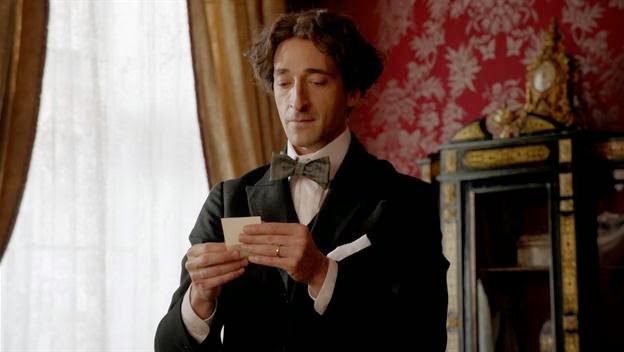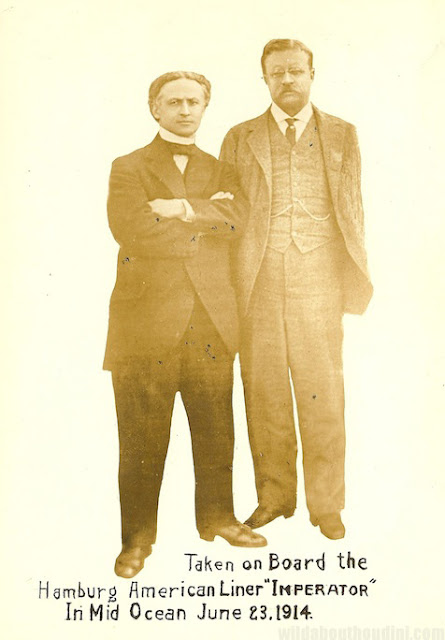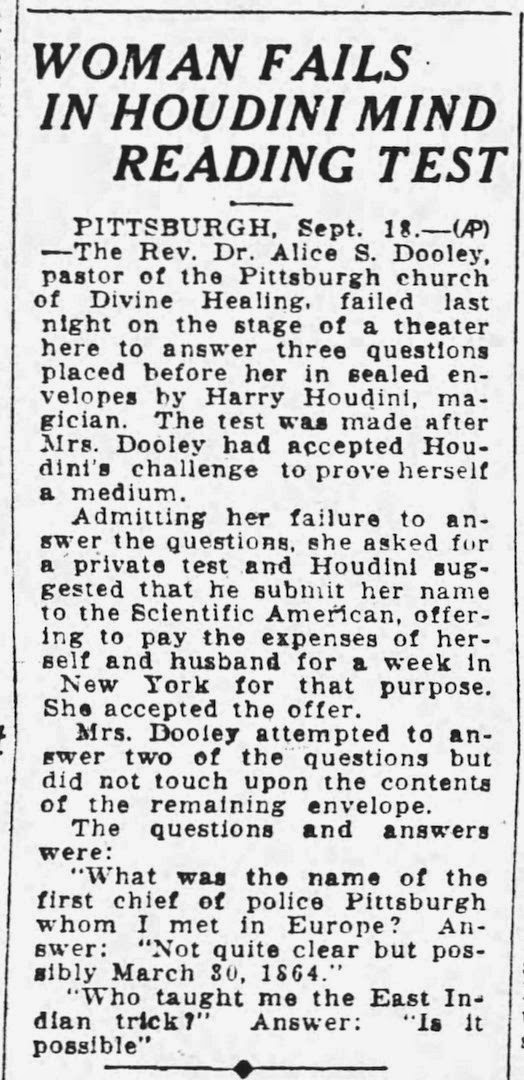On Tuesday, November 27, 1906, Houdini leapt manacled from the Belle Isle Bridge in Detroit, MI, freeing himself from two pairs of handcuff beneath the cold waters. The Belle Isle Bridge jump is one of Houdini's most well-known feats, largely because of a fiction created about this escape.
In later accounts, it was claimed that the Detroit river was frozen and a hole had to be cut in the ice. This provided Houdini with an additional horrifying dilemma when he found himself
trapped under the ice. This dramatic version appeared in the first major Houdini biography,
Houdini His Life Story by Harold Kellock, and passed as fact for many years.
When I was a young Houdini enthusiast in 1980, I did my first primary research on the Belle Isle Bridge jump. I wrote to
The Detroit News and received this front page from November 27, 1906, which records the details of the actual escape. The first thing to notice is that while the weather report shows it was cold enough for snow flurries, it was not freezing, nor was the river frozen over. But this was still an especially chilly jump for Houdini, and while not the dramatic fiction, it still has several points of interest.

One piece of surprising information this newspaper account provides is that the jump was provoked by an encounter with a rival handcuff king identified only as "Grose" (possibly Russell P. Grose). Apparently, Grose boasted that he could escape from the Wayne Country Jail. Houdini, who was appearing at the Temple Theatre at the time, said the jail was "too strong and too perfectly locked for any man to get out without a confederate inasmuch as a man placed in the center cell is 20 feet from any possible lock." Houdini offered Grose $300 if he could free himself. The paper reported Grose was unable to secure permission to attempt the escape.*
Houdini then offered to demonstrate his own skills by making a jump from the Belle Isle Bridge, a 2193 foot span that connects the city of Detroit to Belle Isle Park. Houdini arrived at 1pm with the Secretary of Police, Charles A. Nichols; the Temple Theater Press Agent, John H. Finn; and several reporters. Houdini admitted that while he had made jumps like this before, he had never done one in such cold weather. He was then cuffed with "two of the best and most modern handcuffs" and tethered with a 113 foot safety line ("used solely to save Houdini's life should he get cramps"). Houdini then climbed over the railing, looked down at the water 25 feet below and said, "It's pretty far. Come what will", and jumped.
The paper reported that Houdini stayed near the surface and even came up for air once before freeing himself from the cuffs in just under a minute -- "in spite of the handicap of a cramp that paralyzed his left hand when he struck the icy water." Houdini then swam to a waiting life boat, "safe, but half frozen."
Curiously, the paper makes no mention of crowds of onlookers. It's possible this jump was performed solely for the newspapermen and not advertised in advance. The safety line is another curiosity as it is the only time I've ever heard of Houdini taking such a precaution during a bridge jump. Again, maybe the cold was the reason for this.
So why would Houdini do what appears to have been an impromptu bridge jump in poor conditions? This is only speculation, but it could be he wanted to avoid taking on the Wayne County Jail himself, but still wanted to give the Detroit press boys a story. He might have also wanted to do something that Grose would be reluctant to imitate. In both regards, it worked like a charm. Houdini received nice front page news coverage and Grose vanished from magic history.
As far as I know, there are no photos of Houdini's Belle Isle Bridge jump. Even the
Detroit News elected to use a standard Houdini publicity shot. However, today the AP credits a photo of Houdini's 1912 overboard box escape in New York as being the Belle Isle Bridge, so that image repeatedly shows up
online as such. But we know better.
The current Belle Isle Bridge (renamed the MacArthur Bridge in 1942) is not the same bridge Houdini jumped from in 1906. Houdini jumped from the first Belle Isle Bridge, which was constructed in 1889 and was a steel and wood bridge for pedestrians. That bridge burned down in 1915 and was replaced with a temporary structure. The current bridge, made of reinforced concrete, opened in 1923. It underwent a major restoration in 1986.
 |
| The original Belle Isle Bridge from which Houdini jumped in 1906. |
 |
| The Belle Isle Bridge today. |
*
UPDATE: It looks like Grose did attempt an escape in a story not yet told. Stay tuned!













































